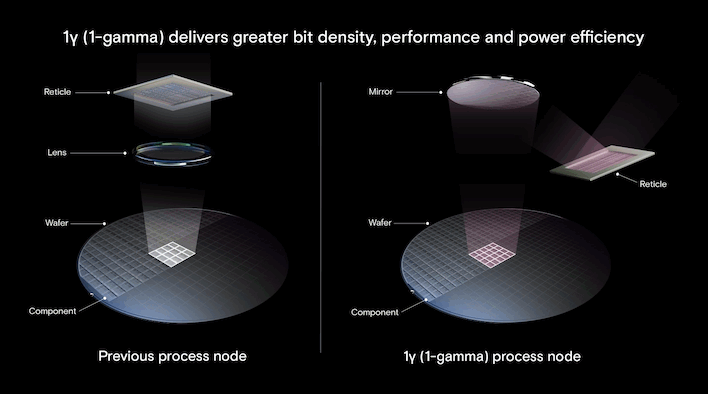Micron's New 1-Gamma DRAM Turbocharges DDR5 To 9600 MT/s
The move to 1-gamma DRAM is significant. Historically, the transition between DRAM nodes has been a complex and costly process, with diminishing returns as manufacturers push deeper into the 10nm-and-below range. Micron's use of extreme ultraviolet (EUV) lithography in this latest node is a notable milestone, as EUV adoption has been slower in DRAM compared to logic chips. The enhanced bit density—over 30% more bits per wafer than the company's last-gen 1-beta tech—suggests that Micron is leveraging EUV effectively to maintain cost-efficiency while scaling production.
The new DRAM will have widespread implications across multiple computing segments. In data centers, the increased speeds will help meet the ever-growing memory bandwidth demands of AI and cloud workloads. For consumer devices, the gains in LPDDR5X efficiency will translate to longer battery life and better performance in AI-powered smartphones, laptops, and even automotive applications. This aligns with broader industry trends where memory performance is becoming a key enabler of AI-driven workloads, from edge computing to large-scale machine learning models.

The competitive landscape for DRAM is heating up, with SK Hynix and Samsung also pushing advancements in next-gen memory. However, Micron's ability to bring its 1-gamma DRAM to market on time gives it an early lead in supplying faster and more efficient memory for next-gen CPUs and AI hardware. As the DDR5 market continues to mature, and AI-driven workloads become the norm, Micron's latest advancement reinforces its position as a major player in the evolving memory ecosystem.


